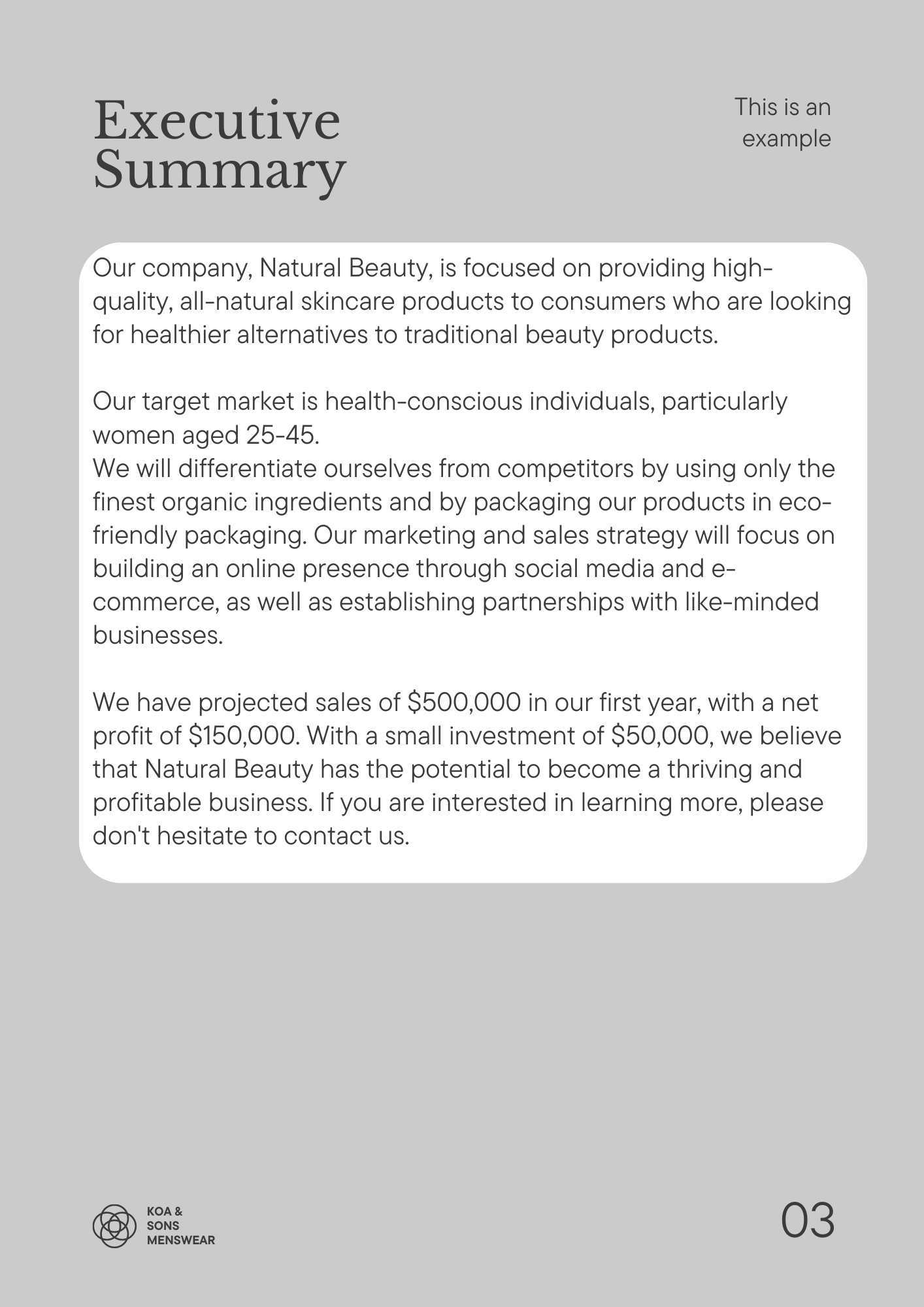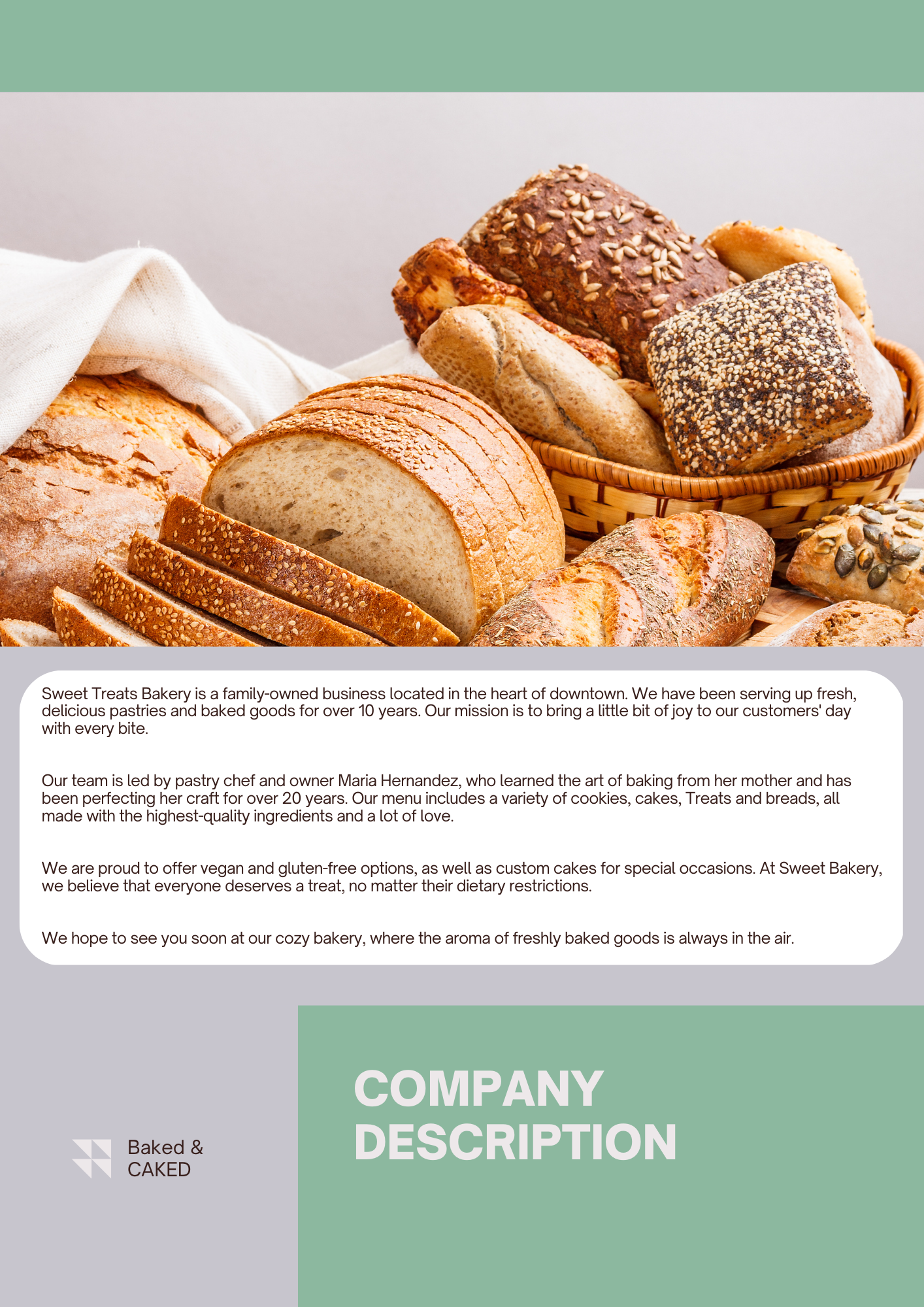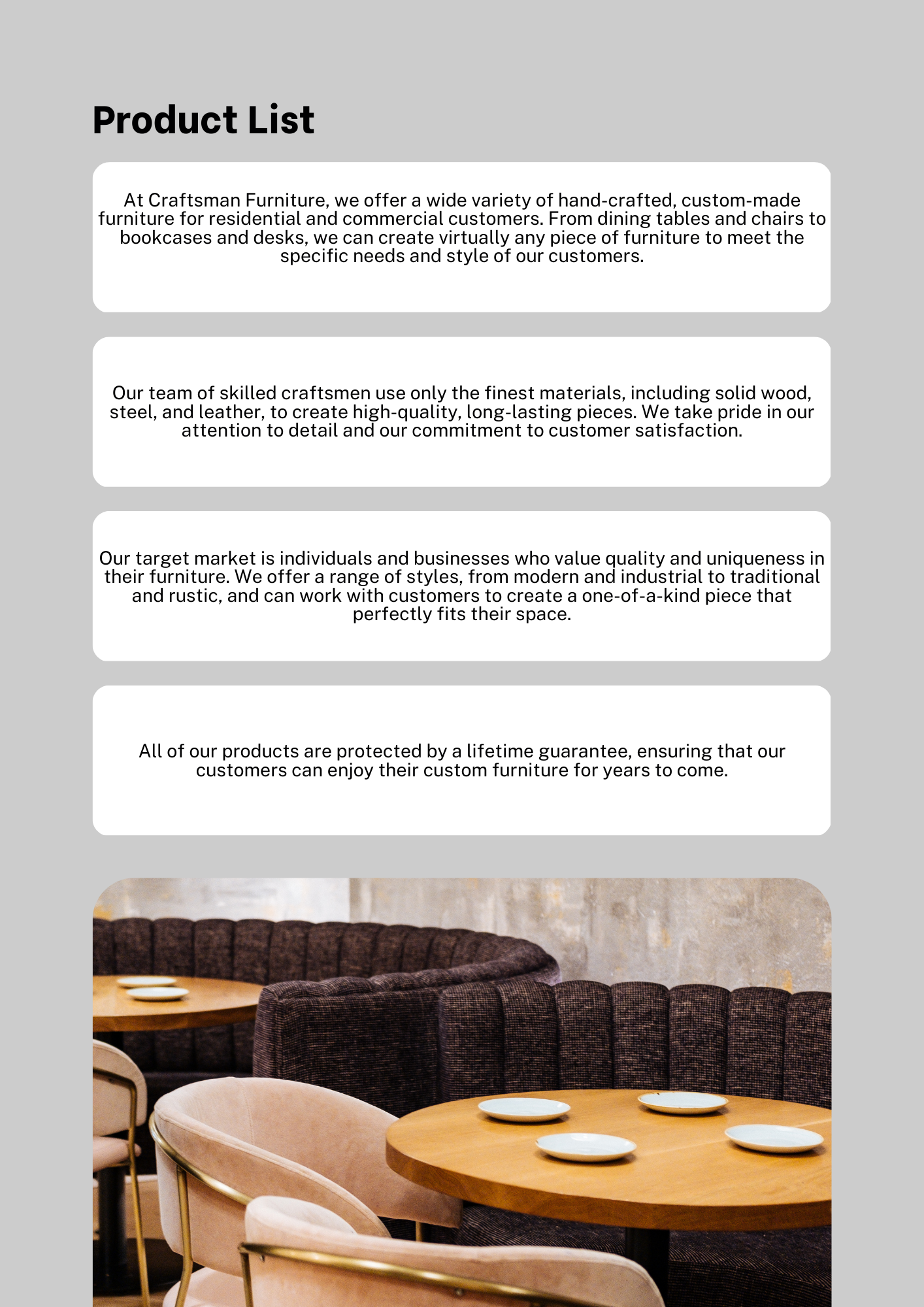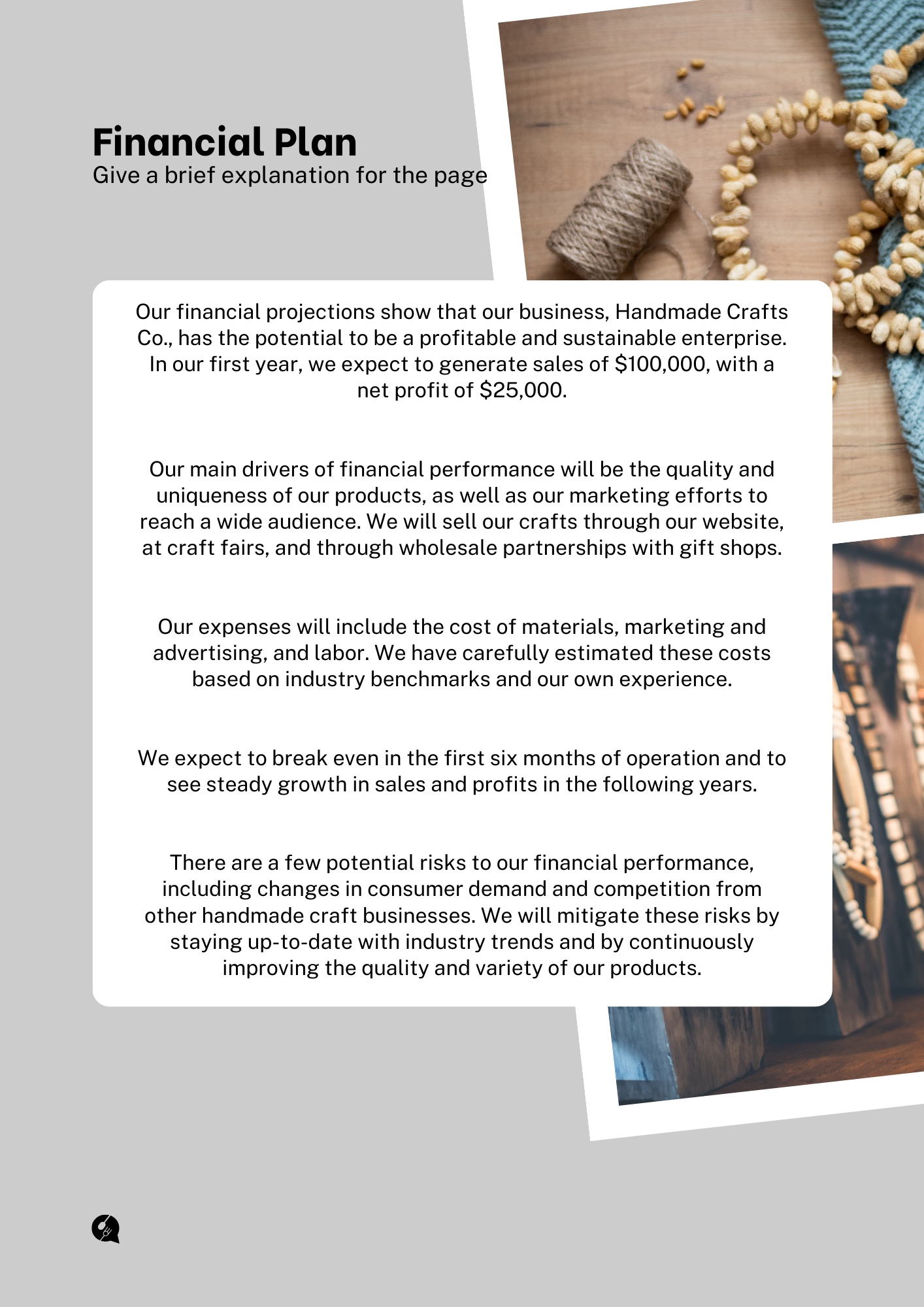Are you ready to turn your big business ideas into a reality? The first step is to sit down and write a solid business plan. This might sound like a daunting task, but trust us, it's worth it. A good business plan is like a treasure map, guiding you towards success and helping you avoid any pitfalls along the way
Plus, it's a great way to impress potential investors or lenders. In this article, we'll break down the process of creating a top-notch business plan into easy-to-follow steps. By the end, you'll have a professional-grade plan that will set your business up for success.
This article includes examples from a variety of industries to provide a diverse range of perspectives on how to write a business plan.
Interested in starting your journey in influencer marketing? Connect with Social Cat for a complimentary trial, or schedule a demo to learn how to collaborate with micro-influencers to elevate your brand's visibility.
Executive summary
The executive summary is a crucial part of a business plan, as it provides a high-level overview of the key points of the plan. It should be concise and easy to read, and should be written last, after the rest of the business plan has been completed.
Here are some tips for writing a strong executive summary:
- Keep it brief: The executive summary should be no more than a few pages long. Utilizing a summarizing tool can help streamline this process.
- Use bullet points: This will make the summary easier to read and more visually appealing.
- Include key information: The executive summary should cover the main points of the business plan, including the business idea, target market, marketing, and sales strategy, financial projections, and any unique selling points.
- Use a compelling tone: The executive summary should be engaging and convince the reader that the business is worth their attention.
- Include a call to action: Encourage the reader to take the next step, whether it is to invest in the business or to learn more about it.
Take a look at an example of an executive summary for a business that sells organic skincare products:

Company description
The company description is an opportunity to introduce your business to the reader and provide more information about what your company does, whom it serves, and how it is unique.
Here are some tips for writing a strong company descriptioKeep it concise: The company description should be a few paragraphs long and should be easy to read and understand.
- Include key information: The company description should include information about the business's history, mission statement, and any key members of the team.
- Describe the product or service: Provide a brief overview of what the company offers and how it benefits the customer.
- Highlight the company's unique selling points: What sets your company apart from the competition?
- Use a tone that reflects the company's brand: The company description should reflect the personality and values of the business.
Next, you'll see an example of a company description for a small bakery:

Market analysis
A market analysis is a crucial part of a business plan, as it provides information about the industry in which the business operates and the target market for the product or service. It can help the business understand its place in the market and identify any opportunities or challenges it may face.
Here are some tips for writing a strong market analysis:
- Research the industry: Gather data on the size and growth of the industry, key players, and any trends or changes that may impact the business.
- Describe the target market: Provide information about the demographics, needs, and purchasing habits of the customers the business is targeting.
- Identify the competition: Describe the other businesses that offer similar products or services, and analyze their strengths and weaknesses.
- Explain the market need: Describe the gap in the market that the business is looking to fill and how the product or service meets this need.
- Use data to support your points: Include statistics, data, and research to support your analysis.
Next, you can take a look at an example of a market analysis for a business that sells locally-sourced, organic produce

The product or service
This section of a business plan is an opportunity to describe what your business offers and how it meets the needs of the customer.
Here are some tips for writing a strong product or service section:
- Provide a detailed description: Explain what the product or service is, how it works, and what benefits it offers to the customer.
- Include any unique features or selling points: What sets your product or service apart from the competition?
- Describe the target market: Who is the product or service intended for?
- Outline the production process: If applicable, describe how the product is made or how the service is delivered.
- Explain any intellectual property protections: If you have patents, trademarks, or copyrights, be sure to mention them in this section.
Below, there is an example of a product or service description for a business that sells custom-made furniture:

Looking to make a splash in the influencer marketing world? Connect with Social Cat for a complimentary trial or schedule a demo to learn how to work with micro-influencers to increase your brand's exposure.
The marketing and sales strategy
This section of a business plan outlines the plan for promoting and selling the product or service. It should include information about the target market, the channels through which the product or service will be sold, and the pricing strategy.
Here are some tips for writing a strong marketing and sales strategy:
- Describe the target market: Who is the product or service intended for, and how will you reach them?
- Outline the marketing plan: How will you promote the product or service to the target market? This could include advertising, social media, partnerships, and other tactics.
- Detail the sales plan: How will you sell the product or service? Will you use a direct or indirect sales approach? Will you sell through a website, retail store, or other channel?
- Explain the pricing strategy: How will you determine the price of the product or service? Will you offer discounts or promotions?
- Include any relevant metrics: Use data and research to support your marketing and sales strategy.
Here is an example of a marketing and sales strategy for a business that sells artisanal chocolates:

The financial plan
Is a crucial part of a business plan, as it outlines the financial projections for the business and provides a roadmap for achieving financial success.
Here are some tips for writing a strong financial plan:
- Include financial statements: The financial plan should include projected income statements, balance sheets, and cash flow statements.
- Use realistic assumptions: Be sure to base your financial projections on realistic assumptions about sales, expenses, and growth.
- Explain the key drivers of financial performance: What factors will impact the financial success of the business?
- Include a break-even analysis: This will show at what point the business will start to turn a profit.
- Discuss any potential risks: What risks could impact the financial performance of the business? How will you mitigate these risks?
Here is an example of a financial plan for a business that sells handmade crafts:

Here you have short numbers breakdown:
Conclusion
A business plan is an opportunity to summarize the main points of the plan and encourage the reader to take the next steps.]
Here are some tips for writing a strong conclusion:
- Recap the key points: Briefly summarize the main points of the business plan, including the business idea, target market, marketing and sales strategy, and financial projections.
- Emphasize the unique value proposition: Remind the reader of what sets your business apart from the competition and why it is a good opportunity.
- Encourage action: Encourage the reader to take the next steps, whether it is to invest in the business or to learn more about it.
- End on a positive note: Conclude the business plan on a hopeful and optimistic note, expressing your confidence in the success of the business.
You should also check our article about the 10 top mistakes made by small business owners.
Table of content
Looking for influencers?

About Stefan A.
Stefan is a Growth Marketer turned founder with a background in customer acquisition, Influencer Marketing, and early-stage startups. At Social Cat, Stefan drives day-to-day operations and growth, helping small brands connect with the right influencers to scale their reach and impact.









